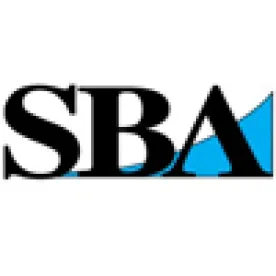On March 27, the Coronavirus Aid, Relief and Economic Security (CARES) Act was signed into law, providing an unprecedented level of emergency assistance for individuals, families and businesses affected by the coronavirus epidemic.
The legislation includes a new loan program – the Paycheck Protection Program administered through the SBA – that provides up to $349 billion in loans to eligible entities, with such loans being subject to forgiveness under certain circumstances. The 100 percent federally-guaranteed loans are available under a new subsection 36 of Section 7(a) of the Small Business Act.
The loans may be used for a variety of purposes, including payroll costs (as described below), rent, utilities, mortgage interest (not principal) and interest on debt existing prior to February 15, 2020.
Eligibility
Eligible entities are those with less than 500 employees, including the following:
-
Businesses
-
501(c)(3) nonprofit organizations
-
Veterans organizations
-
Certain tribal business concerns
-
Eligible self-employed individuals
-
Independent contractors
-
Sole proprietorships
-
Businesses in the accommodation and food services industry (NAICS 72) that have less than 500 employees per physical location
For the purposes of determining the 500 employee threshold, applicants should include full time, part-time and other basis employees. General SBA affiliations apply except such rules are waived with respect to:
-
Businesses in the accommodation and food services industry (NAICS 72),
-
Franchises assigned a franchise identifier code
-
Business licensed under Section 301 of the Small Business Investment Act
Maximum Loan Amount
Loans are available for the lesser of the average monthly payroll costs times 2 1/2 plus any EIDL received after January 31, 2020 that are refinanced under subsection 36 or $10 million. Average monthly payroll costs are calculated based on the one-year period prior to the loan disbursal date except for seasonal employers and employers not in business between February 15, 2019 and July 30, 2019.
In the case of seasonal employers, the employer may choose to calculate the average monthly payroll costs based on the 12-week period starting February 15, 2019 or the period starting March 1, 2019 through June 30, 2019.
In the case of new employers not in business between February 15, 2019 and July 30, 2019, the average monthly payroll costs is calculated based on the period beginning January 1, 2020 through February 29, 2020.
Payroll costs include: employee salary, wages and commissions; payment of cash tips; payment of vacation; parental, family, medical or sick-leave; allowance for dismissal or separation; payment required for group health benefits (including insurance premiums); payment of retirement benefits; or payment of state or local tax assessed on employee compensation; and sole proprietor income or independent contractor compensation not in excess of $100,000.
Payroll costs exclude: compensation of an individual person in excess of $100,000 (as prorated for the period); federal employment taxes imposed or withheld taxes; compensation to an employee whose principal residence is outside of the U.S.; qualified sick leave for which a credit is allowed under Section 7001 of the Families First Coronavirus Response Act; and qualified family leave wages for which a credit is allowed under Section 7001 of the Families First Coronavirus Response Act.
Terms
Loans are available for up to a 10-year term (amortized) at 4 percent interest, with six months (and up to one year) deferral of principal and interest payments. Notably, certain SBA requirements are waived. Loans are available with:
-
No personal guaranties of shareholders, members or partners
-
No collateral
-
No proving recipient cannot obtain funds elsewhere
-
No SBA fees (may still have to pay lender processing fee)
-
No prepayment fee
Application Process
Eligible entities may file applications with an SBA-approved lender. Lenders have been delegated authority to make loans without SBA review. Eligible applicants will have been in operation on February 15, 2020, and will have paid employees and payroll taxes or independent contractors.
Applicants will need to certify that the loan is necessary, and will be used to retain workers and pay eligible expenses. Applicants will further need to certify that no other application for a loan for the same purpose is pending and that the entity has not received any other loan for the same purposes through December 31, 2020.
Loan Forgiveness
Section 1106 outlines forgiveness of loans obtained under the Act.
The forgiven amount will be equal to the amount actually paid for payroll costs, salaries, benefits, rent, utilities and mortgage interest during the eight weeks following disbursement of the loan. Additional wages paid to tipped employees under Section 3(m)(2)(A) of the Fair Labor Standard Acts may also be forgiven.
The forgiveness amount is subject to reduction if there is a workforce reduction or a reduction in the salary or wages of an employee.
-
The amount attributable to a workforce reduction will be equal to the initial forgiven amount multiplied by the quotient of average FTEs during the eight-week period divided by the average FTEs for the period from February 15, 2019 through June 30, 2019 or January 1, 2020 through February 29, 2020, as determined by the recipient
-
The amount attributable to a salary or wage reduction will be the amount of any salary or wage decrease in excess of 25 percent of the total salary or wages during the most recent full quarter such employee was employed before the eight-week period. Only employees who did not receive, during any single pay period during 2019, wages or salary at an annualized rate of pay in excess of $100,000 are included in this calculation.
Reductions in workforce, salaries and wages that occur from February 15, 2020 to April 26, 2020 will be disregarded for purposes of reducing the forgiveness amount so long as the reductions are eliminated by June 30, 2020.
Borrowers must apply for forgiveness with the lender servicing the loan. Lenders have 60 days to review and make a determination. Any portion of the loan that is forgiven will be excluded from gross income.




 />i
/>i

